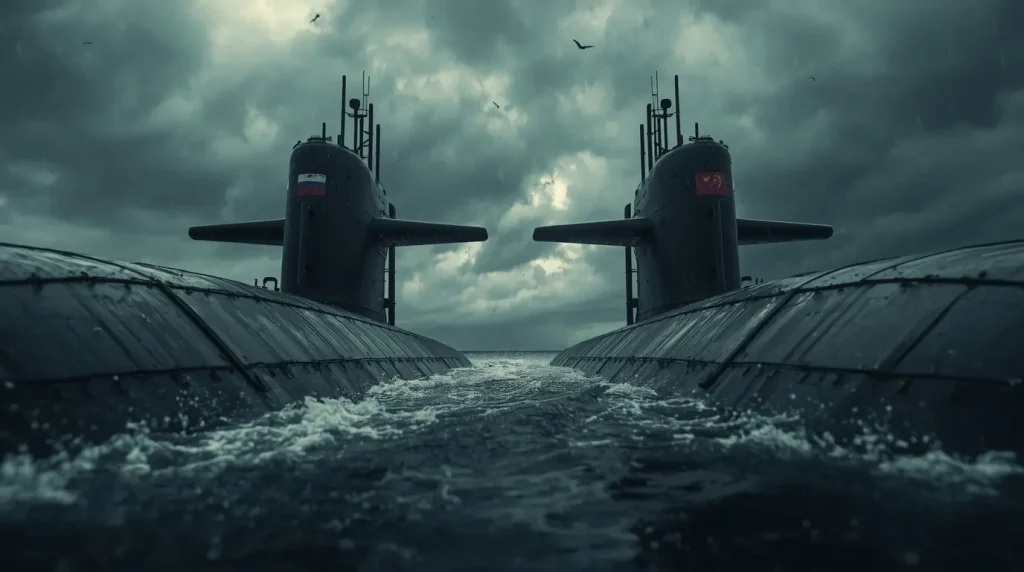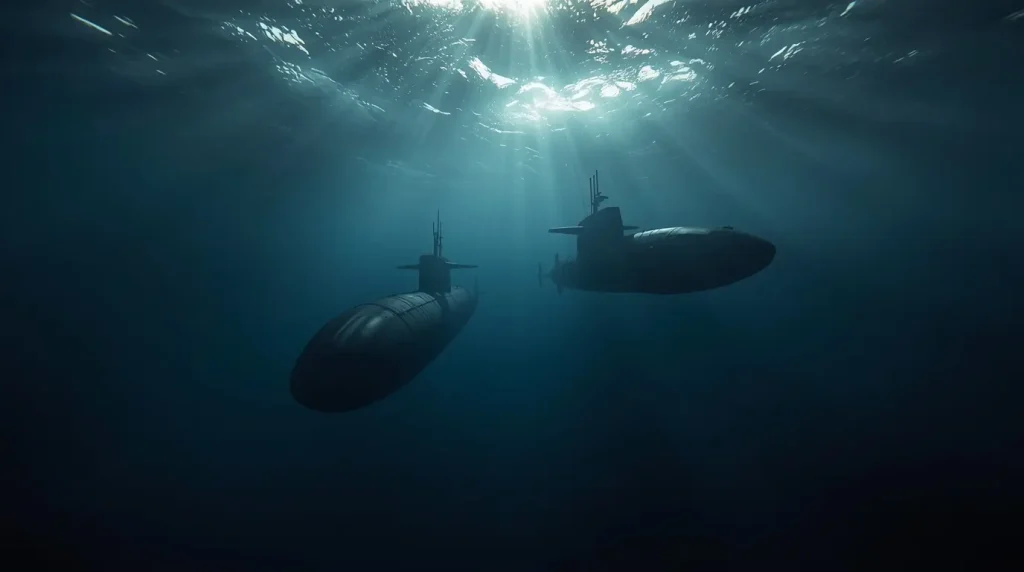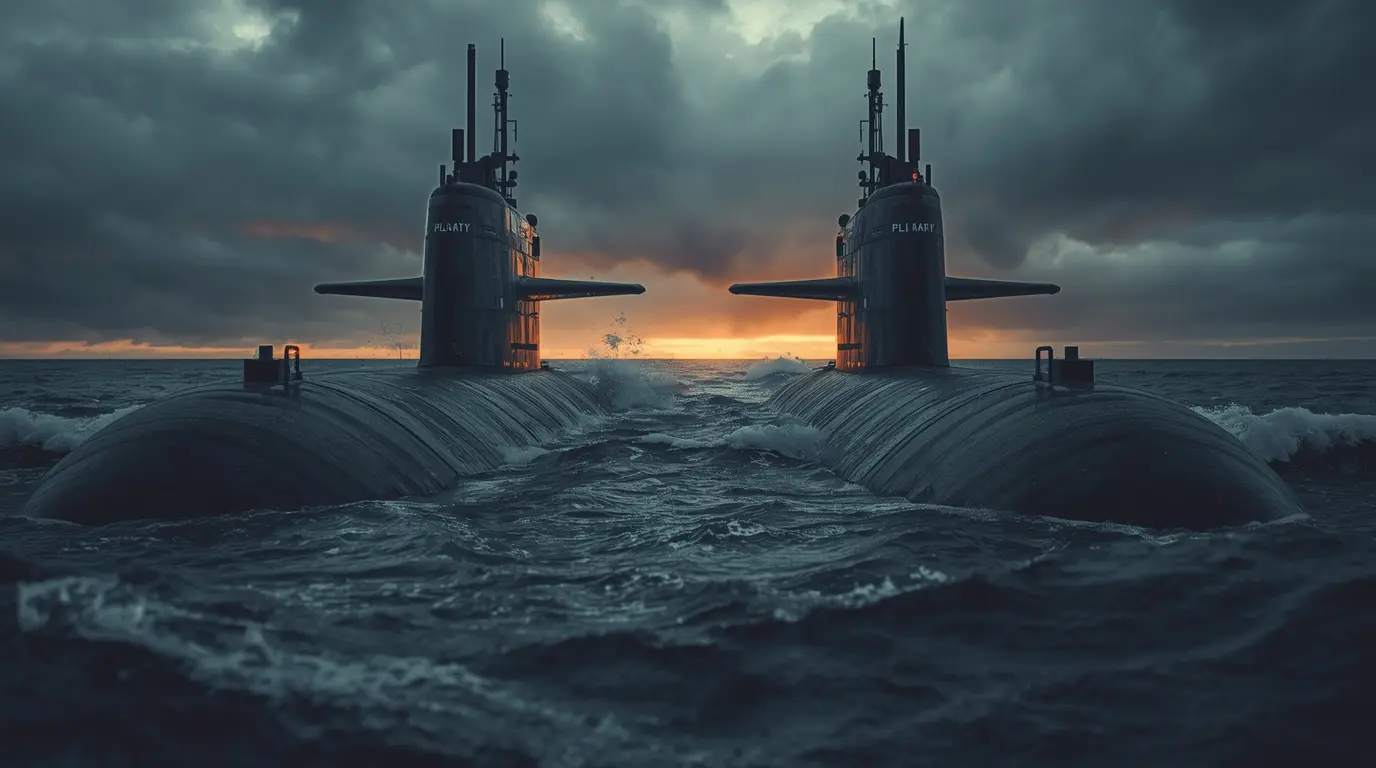In a recent development of growing military collaboration, Russia and China have completed their initial joint submarine patrol in the Asia-Pacific region. This operation has further evolution their strategic partnership and showcases increased advancements in undersea warfare capabilities. The patrol, which was executed with diesel-electric submarines, covered a region in the Sea of Japan and the East China Sea, extending roughly 2,000 nautical miles from Russia’s Vladivostok base. The submarine collaboration demonstrates deepening military cooperation while also impacting the security dynamics of the region.
Details of the Joint Submarine Patrol
The joint submarine patrol began in early August with the completion of the Maritime Interaction 2025 naval exercises in the Sea of Japan. The Volkhov, an Improved Kilo-class submarine from the Russian Pacific Fleet, was accompanied by one of China’s People’s Liberation Army Navy (PLAN) diesel-electric submarines. The vessels followed specific courses and patrolled the Sea of Japan and East China Sea, with the Russian vessel returning to base after the operation.
The joint submarine patrols are an extension to the pattern of bilateral military activities starting in the year 2021. However, these are the first patrols to incorporate the use of submarines, as the previous versions solely utilized surface vessels. The integration of submarines marks an advanced level of synchronization in the two navies.

Strategic Suggestion and Expert Speculation
The joint submarine patrol demonstrates an increase of military cooperation for both Russia and China. In the words of Chinese military specialist, Zhang Junshe, this operation “exhibits a lofty level of strategic mutual trust” of the two countries. In his remarks, Zhang pointed out the coordination of the submarines not only requires high level technical skills, but requires deeper exchanges on joint action. The cooperative action for the submarine patrol is believed to enhance the joint capacity to ensure collaborative maritime security and stability.
The two countries are portraying the joint patrol as a routine exercise intended to enhance naval cooperation, maintain peace in the maritime domain, and monitor areas free of targeting any other nation. However, commentators point out that this activity fits the larger goal of the two countries to better counter the U.S. presence in the Asia-Pacific region.
Historical Context and Increasing Coordination
The first joint submarine patrol emerges from streams of highly developed military collaboration:
2021: The first joint naval patrol consisting of China and Russia surface vessels was completed in 2021, which circumnavigated the main island of Japan.
2023: China and Russia both expanded their operations to include joint air and sea patrols in Alaska.
2024: Both countries conducted two joint patrols in the Western Pacific and the Philippine Sea.

The inclusion of submarines in this joint patrols made this collaboration qualitatively more advanced. Submarines are among the most stealthy and strategically valuable assets in naval warfare. Increasingly important for modern maritime strategy, they are capable of gathering intelligence, performing anti-surface warfare, anti-submarine warfare operations, and deterrence. The successful execution of a joint submarine patrol illustrates that Russia and China are advancing their underwater domain capabilities, which are crucial for contemporary maritime strategy.
Technological and Operational Implications
The involvement of diesel-electric submarines in this joint submarine patrol is of particular interest. During certain operations in shallow waters, these vessels are quieter than nuclear-powered submarines, making them more effective for covert operations. The Russian Navy’s Volkhov, an Improved Kilo-class submarine, is one of the more stealthy and enduring submarines that was made for these types of patrols.
The focus on interoperability and technical proficiency is captured in earlier drills that involved simulated rescue operations. This is in line with both countries’ spending into modernizing and expanding their fleets. Russia has enhanced their far-eastern naval base to home port nuclear powered subs, while China, who already operates the largest navy in the world by hull count, is doubling down on investment into next generation submarine technologies.
Regional and Global Reactions
The joint submarine patrol has garnered the attention of regional actors.
Japan: The Japanese Defense Ministry’s Joint Staff has reported sightings of Russian submarines and other vessels passing through key straits which may tie into the joint patrol.
America: NORAD has downplayed incursions of Russian aircraft into the Alaskan airspace as routine activity, while the U.S. Coast Guard is keeping an eye on increased activity by Chinese research vessels in the Arctic.
The joint patrol is happening at the same time as other geopolitical shifts like Russian President Vladimir Putin’s scheduled trip to China to attend the Shanghai Cooperation Organization summit and other events celebrating the victories of WWII. The convergence of these events highlights the growing alignment of Moscow and Beijing.
Furture Outlook
After the successful conduct of the first joint submarine patrol, it is likely that the future underwater collaborations between Russia and China will be more frequent and intricate. Further drills have already been hinted at by Russian officials and continuation of the joint training has been suggested by the Chinese state media. Although both nations are pursuing the countering of Western influence, Russian and Chinese naval cooperation will serve as a critical element of their strategy, especially in the submarine patrols.
Furthermore, the increase in the frequency of joint patrols and exercises is more indicative that Russia and China mean to assimilate their operational protocols and technologies, which could result in greater combined operations in the more distant future.
Importance of Submarine Patrols
The Following are the primary roles played by Submarines in modern naval strategy:
Deterrence: Particularly with the possession of missiles, be it nuclear or conventional, submarines provide powerful and stealthy deterence.
Surveillance: Submarines excel in gathering intelligence and monitoring the movements of ships.
Strategic Flexibility: Submarines have the capability to do a variety of missions which include but are not limited to, the deployment of special forces and anti-surface warfare.
This joint patrol showcases the Russian and Chinese partnerships and is a prime example in demonstrating the enhanced collective maritime security.
Conclusion
The first combined submarine patrol exercise conducted by Russia and China marks a new milestone in their military cooperation. It illustrates their advancing innovation and tactical cooperation in the naval realm. Although both countries label the patrol non-provocative, it certainly showcases their ability to work together on sophisticated underwater missions. The increasing scope of their joint military activities may tilt the strategic balance in the Asia-Pacific region. All countries will monitor these China-Russia submarine patrol developments and their impact on geopolitical balance in the region.
Source: https://edition.cnn.com/2025/08/28/asia/russia-china-joint-submarine-patrol-intl-hnk-ml
For more incredible stories of everyday news, return to our homepage.




